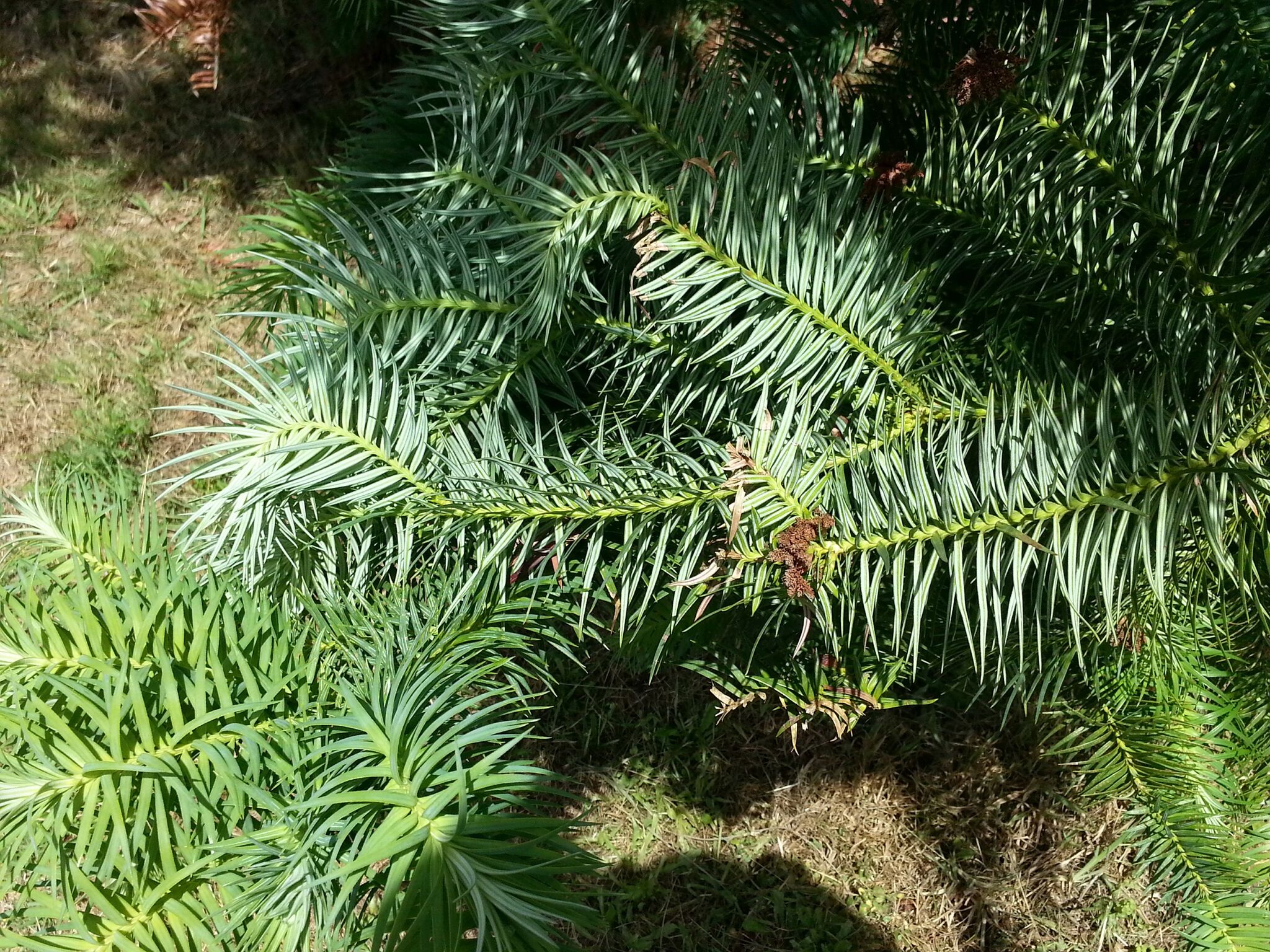
A columnar tree to 20 m tall. Bark of old trees shredding in strips. Branchlets shed at the base of the tree. Leaves 3-7 cm long, 2-4 mm wide, linear to linear-lanceolate, persisting for five or so years then dying and remaining dry and brown on the plant for several years, often curving backwards; margins finely toothed, apex with a fine point. Male cones c. 12 together in terminal clusters. Female cones 3-4 cm long, solitary or grouped near the ends of the shoots, more or less spherical; scales stiff, pointed, long-spined. Seeds 3 on each scale, winged.
C & S China.
NSW: Bundanoon (Erith St, entrance to 'Ardross', old tree). VIC: Dandenongs (Alfred Nicholas Gardens c. 6 m in 1990); Daylesford (Bot. Gds); Geelong (Bot. Gds); Maryborough (Phillips Garden); Melbourne (Royal Bot. Gds). TAS: Launceston (Cataract Gorge,large tree 20 m tall in 1992); Hobart (Royal Tasmanian Bot. Gds). ACT: Weston Park (SW corner); Yarralumla (Nsy).
Source: (1995). Taxodiaceae. In: . Horticultural Flora of South-eastern Australia. Volume 1, Ferns, conifers & their allies. The identification of garden and cultivated plants. University of New South Wales Press.

Cunninghamia lanceolata 'Glauca'
Leaves distinctly waxy blue. More cold resistant than the species. Origin unknown.
ACT: Australian National University (Forestry Building). Vic: Dandenongs (plantation at Hamer Arboretum ptd. 1979, c. 6 m tall in 1990, blue-leaved variants mixed with glossy green leaved forms); Melbourne (Government House).